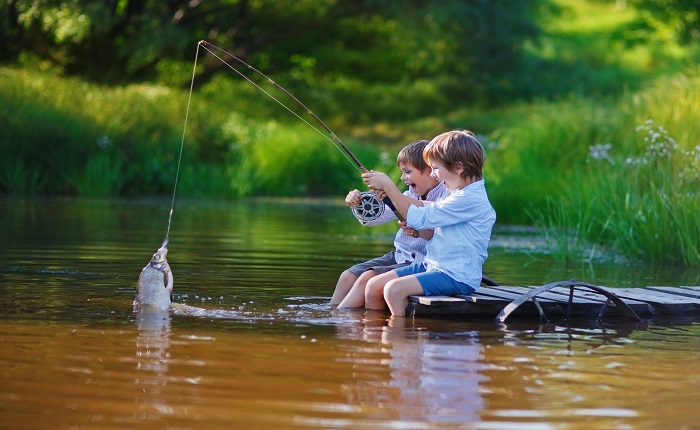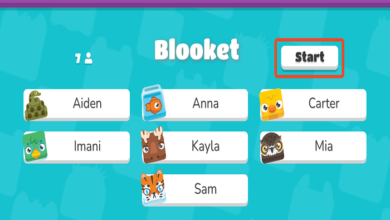Free Fishing Day: Celebrate and Enjoy the Outdoors

Free Fishing Day is a designated day when individuals can fish without a license in many states across the U.S. This initiative aims to encourage fishing as a recreational activity, promote conservation, and connect people with nature. Whether you’re a seasoned angler or a novice, Free Fishing Day presents an excellent opportunity to explore the outdoors, bond with family and friends, and appreciate the beauty of local water bodies.
On this day, communities often organize various events and activities, making it a celebration of fishing and nature. People of all ages are encouraged to participate, learn, and share their experiences. The primary goal of Free Fishing Day is to instill a love for fishing, promoting responsible fishing practices and environmental stewardship.
History of Free Fishing Day
The origins of Free Fishing Day can be traced back to the early 1980s when several states in the U.S. began implementing this initiative. The concept quickly gained popularity as it provided an accessible entry point for individuals to experience fishing without the barrier of needing a fishing license.
The idea behind Free Fishing Day was not only to introduce new anglers to the sport but also to promote awareness about fish conservation and the importance of preserving aquatic ecosystems. As more states adopted this tradition, it became an annual event that many look forward to each year.
Today, Free Fishing Day is celebrated in various forms across different states, with each region putting its unique spin on the event. This day has evolved into a nationwide celebration of fishing, promoting family-friendly activities and outdoor enjoyment.
Importance of Free Fishing Day
Free Fishing Day holds significant importance for several reasons. Firstly, it democratizes access to fishing, allowing individuals and families who may not have the resources to purchase a fishing license to experience the joy of fishing. This inclusion fosters a love for nature and encourages more people to participate in outdoor recreational activities.
Secondly, Free Fishing Day serves as a platform for educational initiatives. Many local fishing organizations and wildlife agencies host events and workshops to teach participants about fishing techniques, equipment, and the ecological impact of fishing. These educational components help foster a sense of responsibility among anglers, encouraging them to practice sustainable fishing.
Lastly, Free Fishing Day strengthens community bonds. Local events create opportunities for families and friends to come together, share experiences, and form lasting memories. It also provides a platform for communities to engage with their local fisheries and promote conservation efforts.
How to Prepare for Free Fishing Day
Preparation is key to enjoying Free Fishing Day to its fullest. Whether you’re a beginner or an experienced angler, having the right gear and knowledge can enhance your experience. Here are some essential tips for preparing for this exciting day:
- Research Local Regulations: While Free Fishing Day allows you to fish without a license, it’s crucial to familiarize yourself with local regulations. Each state has specific rules regarding fishing methods, size limits, and catch-and-release practices.
- Gather Your Gear: Make sure you have the necessary fishing gear, including a rod, reel, bait, and tackle. If you’re unsure about what to bring, consider visiting a local tackle shop for advice.
- Choose Your Location: Research local fishing spots to find the best locations for fishing. Look for areas that are known for good fishing opportunities, and consider visiting state parks, lakes, or rivers.
- Invite Friends and Family: Free Fishing Day is an excellent opportunity to spend time with loved ones. Invite friends and family to join you, making it a fun outing for everyone involved.
- Check the Weather: Keep an eye on the weather forecast leading up to Free Fishing Day. Dressing appropriately for the weather conditions can enhance your comfort and enjoyment while fishing.
- Learn Basic Techniques: If you’re new to fishing, take some time to learn basic fishing techniques. There are plenty of online resources, tutorials, and local workshops that can help you get started.
By taking these steps to prepare for Free Fishing Day, you can ensure a memorable and enjoyable experience on the water.
Types of Fishing You Can Try on Free Fishing Day
Free Fishing Day is a fantastic opportunity to explore different types of fishing. Whether you’re interested in freshwater or saltwater fishing, there’s something for everyone. Here are some popular types of fishing to consider:
- Freshwater Fishing: Freshwater fishing is a great option for beginners, as it often requires less specialized gear. You can fish in lakes, rivers, and ponds, targeting species such as bass, trout, and panfish.
- Saltwater Fishing: If you live near the coast, consider trying saltwater fishing on Free Fishing Day. This type of fishing offers the chance to catch a variety of species, including snapper, grouper, and mackerel.
- Fly Fishing: Fly fishing is a unique technique that uses artificial flies to attract fish. It’s often practiced in freshwater rivers and streams and can be a rewarding challenge for those willing to learn.
- Ice Fishing: In colder regions, ice fishing can be an exciting experience during Free Fishing Day. This involves fishing through holes drilled in the ice and targeting species such as pike and perch.
- Catch and Release: Many anglers participate in catch-and-release fishing, which involves carefully releasing fish back into the water after catching them. This practice promotes sustainability and helps maintain fish populations.
By exploring these different types of fishing, you can find the method that best suits your interests and abilities. Free Fishing Day is an excellent time to try something new and discover your passion for fishing.
What to Expect on Free Fishing Day
On Free Fishing Day, you can expect a vibrant atmosphere filled with excitement and camaraderie among fellow anglers. Many communities organize events and activities to celebrate this special day, creating a festive environment for all participants.
- Community Events: Many towns and cities host organized fishing events, including contests, fishing clinics, and educational workshops. These events often feature local experts who can provide valuable tips and insights.
- Family-Friendly Activities: Free Fishing Day is designed to be family-oriented, so you can expect various activities for kids, such as casting contests, fishing games, and educational displays about aquatic ecosystems.
- Opportunities to Learn: If you’re new to fishing, take advantage of the many educational resources available. Many local organizations provide hands-on training and demonstrations to help beginners feel confident on the water.
- Meet Fellow Anglers: Free Fishing Day is a great opportunity to connect with fellow fishing enthusiasts. Share stories, tips, and experiences with other participants, fostering a sense of community and belonging.
- Access to Prime Fishing Locations: Many parks and fishing spots will be bustling with activity on Free Fishing Day. It’s an excellent chance to explore new areas, meet other anglers, and enjoy the beautiful outdoors.
Overall, Free Fishing Day offers a unique blend of education, recreation, and community spirit. Participants can look forward to a day filled with fun, learning, and connection.
Safety Tips for Free Fishing Day
Safety should always be a top priority when participating in any outdoor activity, including fishing. Here are some essential safety tips to keep in mind during Free Fishing Day:
- Wear a Life Jacket: If you’re fishing from a boat or near deep water, wearing a life jacket is crucial for your safety. Accidents can happen, and being prepared can save lives.
- Stay Hydrated: Bring plenty of water to stay hydrated throughout the day, especially if you’re fishing in warm weather. Dehydration can lead to fatigue and affect your overall enjoyment.
- Be Aware of Weather Conditions: Monitor the weather closely. If storms are expected, it may be best to reschedule your fishing plans for a safer day. Avoid fishing during thunderstorms or extreme weather.
- Follow Local Regulations: While Free Fishing Day allows you to fish without a license, it’s essential to adhere to local regulations regarding size limits, catch limits, and restricted areas to ensure sustainable practices.
- Keep an Eye on Children: If you’re fishing with kids, always keep a close watch on them. Teach them about safety around water and fishing equipment to prevent accidents.
By prioritizing safety on Free Fishing Day, you can enjoy a worry-free experience and focus on making lasting memories with friends and family.
Environmental Stewardship on Free Fishing Day
One of the primary goals of Free Fishing Day is to promote environmental stewardship among anglers. This day provides an opportunity to raise awareness about the importance of conserving aquatic ecosystems and protecting fish populations. Here are some ways to practice environmental stewardship while fishing:
- Practice Catch and Release: Consider practicing catch-and-release fishing to help maintain healthy fish populations. This approach allows anglers to enjoy fishing while minimizing the impact on local ecosystems.
- Properly Dispose of Waste: Always clean up after yourself and properly dispose of any trash or fishing gear. Littering can harm aquatic life and damage natural habitats.
- Respect Wildlife: When fishing, be mindful of the surrounding wildlife. Avoid disturbing nesting areas and keep a safe distance from animals. Remember, you are a guest in their habitat.
- Use Eco-Friendly Fishing Gear: Whenever possible, choose eco-friendly fishing gear and tackle. Avoid using harmful materials and opt for biodegradable options that won’t harm the environment.
- Educate Others: Share your knowledge about conservation practices with fellow anglers and encourage them to adopt sustainable fishing methods. Together, we can protect our natural resources for future generations.
By embracing environmental stewardship on Free Fishing Day, you can contribute to the preservation of our aquatic ecosystems while enjoying the sport you love.
How to Get Involved in Free Fishing Day Events
Many communities host events to celebrate Free Fishing Day, offering various activities and educational opportunities for participants. Here’s how you can get involved:
- Check Local Listings: Visit your state’s fish and wildlife agency website to find information about Free Fishing Day events in your area. Many states provide a calendar of events, including organized fishing tournaments and workshops.
- Volunteer: Consider volunteering at local Free Fishing Day events. Many organizations rely on volunteers to help run activities, provide education, and assist participants. This is a great way to meet fellow anglers and give back to your community.
- Bring Friends and Family: Encourage friends and family to join you in celebrating Free Fishing Day. The more, the merrier! Share the excitement of fishing and help create lasting memories together.
- Participate in Competitions: Many Free Fishing Day events feature friendly fishing competitions with prizes for different categories. Compete in these events for a chance to win and enjoy the thrill of fishing with others.
- Attend Workshops: Take advantage of educational workshops and seminars offered during Free Fishing Day events. These sessions often cover topics such as fishing techniques, conservation, and local aquatic ecosystems.
By getting involved in Free Fishing Day events, you can enhance your fishing experience and make meaningful connections within your community.
Fishing Gear Essentials for Free Fishing Day
Having the right fishing gear can make all the difference on Free Fishing Day. Whether you’re a seasoned angler or a beginner, being prepared with the essentials is key. Here are some must-have items for your fishing trip:
- Fishing Rod and Reel: Choose a rod and reel combo suitable for the type of fishing you plan to do. Beginners may prefer spinning gear, while experienced anglers might opt for baitcasting equipment.
- Fishing Line: Select a fishing line appropriate for your target species and fishing method. Monofilament, fluorocarbon, and braided lines are common options, each with its unique benefits.
- Bait and Lures: Depending on what you’re fishing for, gather a variety of bait and lures. Live bait, such as worms or minnows, can be effective, while artificial lures like spinners and jigs can attract fish as well.
- Tackle Box: Organize your fishing gear in a tackle box to keep everything easily accessible. Include hooks, weights, bobbers, and any other necessary tackle items.
- Fishing License (If Required): While Free Fishing Day allows fishing without a license, some states may have specific regulations. Always check local laws to ensure compliance.
- Sunscreen and Insect Repellent: Protect your skin from the sun and pesky insects. Apply sunscreen before heading out and bring insect repellent to ward off bugs while you fish.
- Cooler: If you plan to keep your catch, bring a cooler with ice to keep your fish fresh. Remember to check local regulations regarding keeping fish.
By packing the right fishing gear for Free Fishing Day, you can set yourself up for a successful and enjoyable experience on the water.
Planning a Family Fishing Trip for Free Fishing Day
Free Fishing Day is the perfect opportunity for families to bond and create lasting memories. Planning a family fishing trip can be an exciting and educational experience for everyone involved. Here are some tips to ensure a successful family fishing outing:
- Choose the Right Location: Select a family-friendly fishing spot with easy access and amenities. Look for local parks, lakes, or rivers that are known for their fishing opportunities.
- Plan Activities for All Ages: Consider incorporating additional activities to keep everyone engaged. Bring along games, snacks, or a picnic to enjoy while taking breaks from fishing.
- Teach Kids About Fishing: Use this opportunity to teach your children about fishing, including how to cast, reel in fish, and practice safe fishing techniques. Hands-on learning can be fun and rewarding.
- Capture the Moments: Bring a camera or smartphone to capture special moments throughout the day. Take pictures of the family fishing together, celebrating catches, and enjoying the outdoors.
- Be Patient and Have Fun: Fishing can require patience, especially when the fish aren’t biting. Encourage a relaxed atmosphere, emphasizing the importance of enjoying the time spent together rather than focusing solely on catching fish.
By planning a family fishing trip for Free Fishing Day, you can create a wonderful experience filled with laughter, learning, and cherished memories.
Exploring Local Fishing Regulations on Free Fishing Day
While Free Fishing Day allows individuals to fish without a license, it’s essential to be aware of local fishing regulations. Each state has specific rules that govern fishing, including size limits, catch limits, and restricted areas. Here’s how to navigate local regulations on Free Fishing Day:
- Research Local Laws: Visit your state’s fish and wildlife agency website to familiarize yourself with local fishing regulations. This information typically includes details about fishing methods, target species, and any specific rules for Free Fishing Day.
- Check for Special Events: Some areas may have unique regulations for Free Fishing Day events, such as designated fishing zones or temporary rules. Always check for any changes or updates to local regulations.
- Understand Size and Catch Limits: Be aware of size and catch limits for different species. Adhering to these limits is crucial for preserving fish populations and promoting sustainable fishing practices.
- Respect Restricted Areas: Some areas may be off-limits for fishing during Free Fishing Day due to conservation efforts or ongoing research. Always respect these restrictions to protect sensitive habitats.
- Participate in Conservation Efforts: Many local organizations promote conservation initiatives. Engage with these efforts to learn more about protecting aquatic ecosystems and sustainable fishing practices.
By understanding local fishing regulations, you can enjoy Free Fishing Day responsibly while contributing to the conservation of fish populations and their habitats.
Success Stories from Free Fishing Day Participants
Free Fishing Day has created countless success stories among participants, ranging from first-time anglers to seasoned fishermen. Here are a few inspiring tales that showcase the impact of this event:
- A Family Bonding Experience: One family shared their experience of fishing together for the first time on Free Fishing Day. They caught several fish and spent quality time learning from each other, strengthening their family bond and creating lasting memories.
- Teaching the Next Generation: A local fishing club organized a Free Fishing Day event, providing fishing lessons to children in the community. Many young anglers caught their first fish, igniting a passion for fishing that will last a lifetime.
- Encouraging Inclusivity: A community event focused on making fishing accessible for individuals with disabilities. By providing specialized equipment and trained volunteers, they ensured everyone could participate in the joy of fishing.
- Promoting Conservation Awareness: A conservation group used Free Fishing Day to educate participants about sustainable fishing practices. Attendees learned about the importance of catch and release and how to protect local fish habitats.
- Connecting Communities: Many local organizations host Free Fishing Day events to bring people together. These gatherings have fostered friendships and connections among participants who share a love for fishing and the outdoors.
These success stories illustrate the positive impact of Free Fishing Day on individuals, families, and communities, showcasing the joy and camaraderie that fishing can bring.
How to Promote Free Fishing Day in Your Community
If you’re passionate about fishing and want to promote Free Fishing Day in your community, there are several ways to get involved. Here’s how you can help raise awareness and encourage participation:
- Organize Local Events: Partner with local fishing clubs, parks, or community organizations to organize Free Fishing Day events. Plan activities, workshops, and contests to engage participants of all ages.
- Utilize Social Media: Use social media platforms to spread the word about Free Fishing Day. Share information about local events, fishing tips, and personal stories to generate excitement and encourage participation.
- Collaborate with Local Businesses: Work with local tackle shops, restaurants, and outdoor gear retailers to promote Free Fishing Day. They can offer discounts, sponsor events, or provide resources to help participants prepare for the day.
- Create Educational Materials: Develop pamphlets or flyers that provide information about Free Fishing Day, local regulations, and fishing tips. Distribute these materials at local events, schools, and community centers.
- Engage with Schools: Partner with local schools to promote fishing as a recreational activity. Organize field trips, fishing clinics, or workshops to introduce students to the joys of fishing.
By taking these steps to promote Free Fishing Day in your community, you can help raise awareness and encourage more individuals and families to experience the joys of fishing.
Conclusion
Free Fishing Day is a wonderful celebration of fishing, community, and the great outdoors. This event provides an opportunity for people of all ages and backgrounds to connect with nature, learn about conservation, and create lasting memories. Whether you’re an experienced angler or trying fishing for the first time, Free Fishing Day encourages everyone to explore the beauty of local waterways.
By participating in Free Fishing Day, you contribute to a larger movement that promotes sustainable fishing practices, environmental stewardship, and community bonding. So mark your calendars, gather your family and friends, and prepare for an unforgettable day of fishing fun!
FAQs
1. When is Free Fishing Day celebrated?
Free Fishing Day varies by state, but it typically occurs in the spring or early summer. Check your state’s fish and wildlife agency website for specific dates.
2. Do I need a fishing license on Free Fishing Day?
No, you do not need a fishing license on Free Fishing Day, but you should familiarize yourself with local regulations and restrictions.
3. Can children participate in Free Fishing Day?
Absolutely! Free Fishing Day is designed to be family-friendly, encouraging children to learn about fishing and enjoy the outdoors.
4. What types of fishing can I try on Free Fishing Day?
You can try various types of fishing, including freshwater, saltwater, fly fishing, and even ice fishing, depending on your location and preferences.
5. How can I find local events for Free Fishing Day?
Visit your state’s fish and wildlife agency website or local community center for information on Free Fishing Day events and activities in your area.




